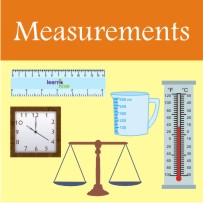
An NPR report highlighted the groundbreaking rotary-action mechanical heart, which pumps continuously rather than pulsing like a natural heart. This innovation represents a marvel of engineering, but an intriguing quote by Dr. Billy Cohn of the Texas Heart Institute deserves attention:
"If you listened to [the cow's] chest with a stethoscope, you wouldn't hear a heartbeat. If you examined her arteries, there's no pulse. If you hooked her up to an EKG, she'd be flat-lined. By every metric we have to analyze patients, she's not living. But here you can see she's a vigorous, happy, playful calf licking my hand."
This statement underscores an essential truth about measurement: the tools and processes we use to measure are not the phenomena themselves. Measurements are inherently intrusive and can influence the very outcomes they seek to evaluate.
The Impact of Measurement
Every measurement introduces some level of influence on the subject being measured. Examples of this include:
- Electronic Voltage Measurement: Measuring voltage requires drawing a small stream of electrons, which can alter the performance of the components being tested.
- Blood Pressure Monitoring: Blood pressure cuffs temporarily alter blood flow, impacting subsequent readings. Users are advised to stop after two attempts to avoid skewed results.
These examples illustrate how the act of measurement can distort results, requiring careful consideration of both methodology and equipment.
Real-Time and Post-Real-Time Measurements
Measurements can be classified into real-time and post-real-time processes:
- Real-Time Measurement: Observing electrical voltage or blood pressure occurs instantly, capturing data in the moment.
- Post-Real-Time Measurement: Vehicle speed is typically calculated after the fact, using either distance traveled over time or magnetic actuator data from rotating wheels.
Data often undergo processing to ensure reliability even in instantaneous measurements like heart rate.
Refining Measurement Processes
To improve the accuracy and reliability of measurements, several techniques are employed:
- Removing Outliers: Events that fall in the top or bottom 5% are excluded to minimize noise.
- Filtering Results: Advanced methods refine raw data beyond simple averaging.
- Gap-Filling: Missing data is interpolated to account for interruptions caused by patient movements or environmental factors.
- Spurious Event Removal: Unexpected anomalies are disregarded to enhance consistency.
- Increasing Sample Size: Larger datasets reduce the impact of random fluctuations and improve statistical accuracy.
Engineers also apply mathematical corrections to account for environmental or procedural influences. For instance, adjustments may be needed to compare swim meet times recorded in pools of varying lengths (25 yards vs. 25 meters) to ensure fair tracking of athletes' progress.
Measurement in Context
Dr. Cohn’s observation about the cow’s mechanical heart encapsulates the nuanced relationship between measurement and reality. While metrics may suggest the cow is clinically dead, her behavior tells another story. This paradox highlights the complexities of relying solely on measurements to define outcomes in both science and technology.
 Closing Thought
Closing Thought
The process of measurement is as much an art as it is a science. While advancements in tools and methodologies have greatly enhanced our ability to quantify and understand the world, they also remind us of the limitations inherent in measurement. As we innovate and refine our techniques, we must remain mindful of the broader context and the stories beyond the data.
Blog by Mark Reynolds, updated December 2024.